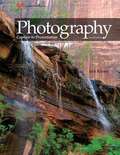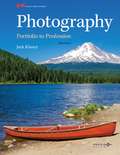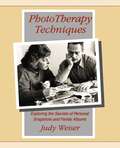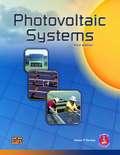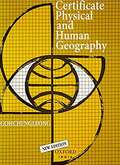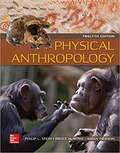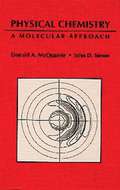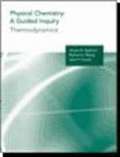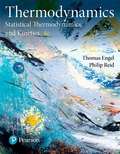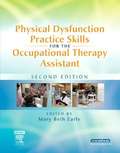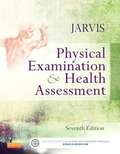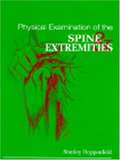- Table View
- List View
PhonicsWorks™ Grade K Readers, Volume 6 (PhonicsWorks™)
by Amy Losi Tisha Ruibal Jennifer MarrewaNIMAC-sourced textbook <p>Grade K Readers, Volume 6</p>
PhonicsWorks™ Grade K Readers, Volume 7 (PhonicsWorks™)
by Amy Losi Tisha Ruibal Jennifer MarrewaNIMAC-sourced textbook <p>Grade K Readers, Volume 7</p>
PhonicsWorks™ Grade K Readers, Volume 8 (PhonicsWorks™)
by Amy Losi Tisha Ruibal Jennifer MarrewaNIMAC-sourced textbook <p>Grade K Readers, Volume 8</p>
PhonicsWorks™ Grade K Readers, Volume 9 (PhonicsWorks™)
by Amy Losi Tisha Ruibal Jennifer MarrewaNIMAC-sourced textbook <p>Grade K Readers, Volume 9</p>
Photography
by John Upton Barbara London Jim StonePhotography is continually changing, and each version of Photography reflects that change. The tools and practice of photography are constantly changing. This book changes with the medium and with the times; as with each new edition, this book updates the traditional practice of photography as well as incorporating current technologies. In response to changing technologies, this book is available as both a print book and an eText. But its fundamental goal remains, it shows how to make photographs, how to control photographic processes, and how different photographers employ them for their own creative purposes. This book is designed to teach the skills that the user will need to use the medium confidently and effectively.
Photography (8th edition)
by John Upton Barbara London Jim Stone Ken Kobré Betsy BrillThe now venerable textbook continues its double focus on technique and visual awareness, updating the technical aspects to include the digital dimension infiltrating the profession, and placing more emphasis of ways to improve visual awareness. Auxiliary material includes an instructor's manual, a student laboratory manual and journal, and an interactive Web site. Annotation C. Book News, Inc., Portland, OR (booknews.com)
Photography: Capture To Presentation
by Jack KlaseyDesigned for use as a first course in the basics of photography, focusing on the application of photographic principles to the field of digital imaging. The text provides a solid knowledge base for the student, covering the essential tools and techniques of photography. Emphasis is on color digital photography to permit concentration on basic skill development, but film cameras and developing techniques are also included. The textbook includes the use of image-editing software and the "digital darkroom", with practical examples of techniques for correcting, enhancing, and creatively manipulating images. After learning the fundamentals, the reader learns about photography situations such as action and event photography, outdoor photography, travel photography, and portrait and studio photography.
Photojournalism: The Professionals' Approach
by Kenneth KobrePhotojournalism: The Professionals' Approach is the definitive book on photojournalism, delivering a blend of insightful interviews with professionals, practical techniques, and high-impact photographs. <p><p> This edition features updates on social media in photojournalism, shooting video on smart phones, and the use of drones to cover the news. It also includes revised chapters on audio and video, and additional international case studies including, among others, approaches to covering the Arab Spring, the Ukrainian Revolution, and resurgent white supremacy in South Africa. New interviews and case studies bring readers on assignment with industry greats, whose experiences provide a guide on how to take your work from a hobby to a profession. The revised and expanded business chapter goes the next step and outlines how to make a living in photojournalism. <p><p> Often called the "bible" of the industry, Photojournalism continues to be the must-have reference for photojournalists that it has been for nearly 40 years.
Photonic Crystals: Molding the Flow of Light
by Robert D. Meade John D. Joannopoulos Steven G. Johnson Joshua N. WinnSince it was first published in 1995, Photonic Crystals has remained the definitive text for both undergraduates and researchers on photonic band-gap materials and their use in controlling the propagation of light. This newly expanded and revised edition covers the latest developments in the field, providing the most up-to-date, concise, and comprehensive book available on these novel materials and their applications. Starting from Maxwell's equations and Fourier analysis, the authors develop the theoretical tools of photonics using principles of linear algebra and symmetry, emphasizing analogies with traditional solid-state physics and quantum theory. They then investigate the unique phenomena that take place within photonic crystals at defect sites and surfaces, from one to three dimensions. This new edition includes entirely new chapters describing important hybrid structures that use band gaps or periodicity only in some directions: periodic waveguides, photonic-crystal slabs, and photonic-crystal fibers. The authors demonstrate how the capabilities of photonic crystals to localize light can be put to work in devices such as filters and splitters. A new appendix provides an overview of computational methods for electromagnetism. Existing chapters have been considerably updated and expanded to include many new three-dimensional photonic crystals, an extensive tutorial on device design using temporal coupled-mode theory, discussions of diffraction and refraction at crystal interfaces, and more. Richly illustrated and accessibly written, Photonic Crystals is an indispensable resource for students and researchers. * Extensively revised and expanded * Features improved graphics throughout * Includes new chapters on photonic-crystal fibers and combined index-and band-gap-guiding * Provides an introduction to coupled-mode theory as a powerful tool for device design * Covers many new topics, including omnidirectional reflection, anomalous refraction and diffraction, computational photonics, and much more.
Phototherapy Techniques: Exploring the Secrets of Personal Snapshots and Family Albums
by Judy Weiser PhotoTherapy Centre Staff"PhotoTherapy Techniques: Exploring the Secrets of Personal Snapshots and Family Albums" is the most comprehensive introduction to the field of PhotoTherapy available. Emphasizing the "what", "why", and "how" of these practical techniques, this book has long been considered an excellent substitute for a training workshop! <p><p> Written by Canadian psychologist, art therapist, consultant, trainer, and PhotoTherapy pioneer Judy Weiser, this book (now in second edition) explains and demonstrates each of the major techniques involved, and provides theoretical rationale from both psychology and art therapy contexts. It also includes many photo-illustrated client examples, case transcripts, and practical experiential "starter" exercises so that readers can immediately begin using these techniques in their own practice. <p><p> This book is about photography as "personally-symbolic communication", rather than "art" -- exploring what a photograph is about emotionally, in addition to what shows on its surface visually. Thus these techniques require no previous experience with cameras or photographic art -- and they can therefore be used successfully by therapists of all theoretical orientations, work settings, or client specializations. <p><p> Often used as a text for university courses as well as for "Continuing Education" licensing credits for numerous mental health professions, this book is a "must" for not only therapists and counselors, but also anyone interested in coaching, personal development, art therapy, social change, diversity training, conflict resolution, special education, community development, visual literacy, visual anthropology/sociology, visual-based research, and even scrapbooking! <p><p> Though long-considered a "classic" for teaching how to use photos in people-helping work, this book is still even more relevant in this "digital age" of mobile phone pictures and online sharing (because it is about the "heart part" of these images rather than their "art part!"!) -- and thus not at all dependent upon which kind of technology created them! <p><p> *For more information, see her Website "PhotoTherapy & Therapeutic Photography Techniques", at: www.phototherapy-centre.com
Photovoltaic Systems
by James P. DunlopPhotovoltaic Systems is a comprehensive guide to the design and installation of several types of residential and commercial PV systems. Numerous illustrations explain the concepts behind how PV arrays and other components operate, and photographs of actual installations show how components are integrated together to form complete systems. This textbook addresses the PV topics included in the NABCEP Entry Level Program. This new edition also covers 2011 NEC® requirements. A CD-ROM is also included with Photovoltaic Systems and contains information to supplement the textbook.
Physical Anthropology
by Philip L. Stein Bruce M. Rowe Brian PiersonPhysical Anthropology, has been thoroughly revised and updated to reflect the latest analyses, fossil finds, and discoveries in the field of physical anthropology. <p><p>This full-color text examines human evolution and biology through photos, illustrations, and an exploration of insights gleaned from anthropologists. Students of this text will appreciate the dynamic relationship between humans and their environment over time and develop the skills they need to dispel the myths and misconceptions surrounding evolutionary theory.
Physical Chemistry: A Molecular Approach
by Donald A. Mcquarrie John D. SimonThis book provides a contemporary approach to the study of physical chemistry. By beginning with quantum chemistry, students will learn the fundamental principles upon which all modern physical chemistry is built.
Physical Chemistry: Thermodynamics
by James N. Spencer Richard S. Moog John J. FarrellDesigned to encourage active and collaborative learning in the physical chemistry classroom, this text is a collection of group activities (ChemActivities) that can accompany any physical chemistry text.
Physical Chemistry: Thermodynamics, Statistical Thermodynamics, and Kinetics
by Thomas Engel Philip ReidEngel and Reid’s Thermodynamics, Statistical Thermodynamics, and Kinetics provides a contemporary, conceptual, and visual introduction to physical chemistry. The authors emphasize the vibrancy of physical chemistry today and illustrate its relevance to the world around us, using modern applications drawn from biology, environmental science, and material science. The 4th Edition provides visual summaries of important concepts and connections in each chapter, offers students “just-in-time” math help, and expands content to cover science relevant to physical chemistry. Tutorials in Mastering™ Chemistry reinforce students’ understanding of complex theory in Quantum Chemistry and Thermodynamics as they build problem-solving skills throughout the course.
Physical Dysfunction Practice Skills For The Occupational Therapy Assistant
by Mary Beth EarlyAimed at students training to become occupational therapy assistants, this textbook teaches key techniques designed to help patients to participate in personally selected and valued occupations. It is assumed that students have already completed basic anatomy and physiology and foundation OT courses. The second edition has been revised to conform to the AOTA's Occupational Therapy Practice Framework.
Physical Education Revised Edition Class 12 - JK Board
by Vishaal InternationalPhysical Education book for class 12th is published by “Vishaal publications”. The book foucuses on the topics like - Physical Fitness, Training Methods, Sociological Aspects of Physical Education, Moral Education, Sports and Environment, Yoga, Concept of Major Games/Sports (Cricket, Athletics, Basketball, Table Tennis), Sports Medicine and First Aid + Rehabilitation along with few viva-voce oriented questionnaire.
Physical Education class 11 - JK Board
by Vishaal InternationalA Textbook of Physical Education is for class 11th, published by “Vishaal International”. The book is published strictly according to the latest specifications issued by J+K State Board of School Education. All the chapters have been included in this book. We have mentioned all the key points. You can find all the short answer type and long answer type questions in the notes. If you are trying to prepare for important question answers for your exams then these notes will serve the purpose. In this way, you can understand the material easily.
Physical Education class 12 - JK Board
by Malhotra Book DepotPhysical Education book for class 12th is published by “MALHOTRA BOOK DEPOT”. All the chapters have been included in this book. We have mentioned all the key points. You can find all the short answer type and long answer type questions in the notes. If you are trying to prepare for important question answers for your exams then these notes will serve the purpose. In this way, you can understand the material easily.
Physical Education class 7 - Karnataka Board: ದೈಹಿಕ ಶಿಕ್ಷಣ ವರ್ಗ 7 - ಕರ್ನಾಟಕ ಮಂಡಳಿ
by Karantaka Patya Pustaka SanghaIts an 7th Standard physical Education Text Book
Physical Education class 8 - Karnataka board: ದೈಹಿಕ ಶಿಕ್ಷಣ ವರ್ಗ 8 - ಕರ್ನಾಟಕ ಮಂಡಳಿ
by Karnataka Patyapusthaka SanghaPhysical Education Textbook for 8th Standard Kannada Medium, Karnataka State
Physical Examination and Health Assessment (Seventh Edition)
by Carolyn JarvisPhysical Examination & Health Assessment is a text for beginning students of physical examination as well as a text and reference for advanced practitioners. The 7th edition has a new chapter section and several new content features.
Physical Examination of the Spine and Extremities
by Stanley HoppenfeldUseful to students and clinicians, this text covers the process of physical examination of the spine and extremities.



